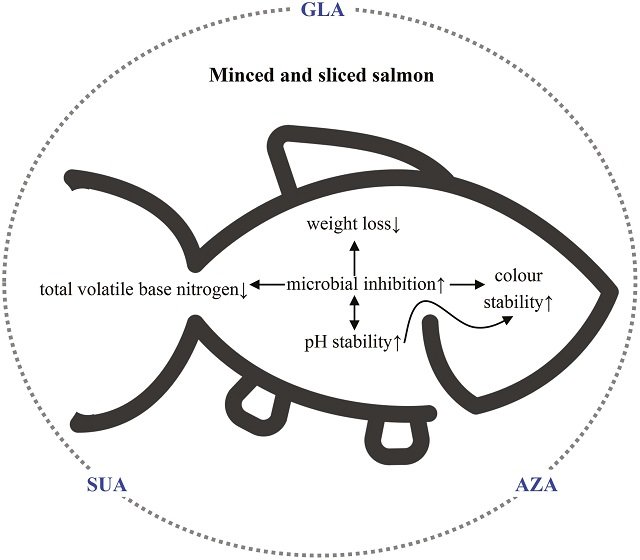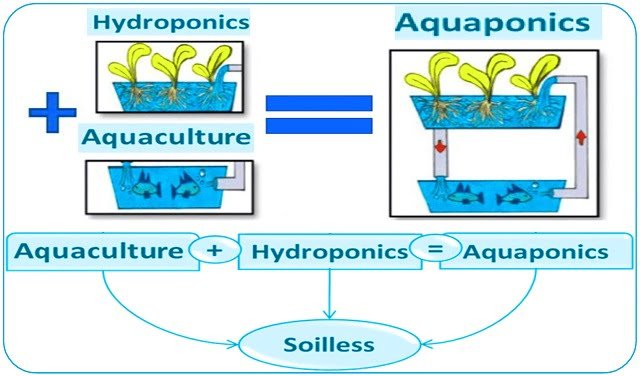
Salmon Faces a Constant Challenge: Its Short Shelf Life. For the aquaculture industry, ensuring that this prized fish reaches consumers in optimal condition is a top priority. Traditionally, refrigerated storage (between 0°C and 4°C) and the use of preservatives such as sulfites have been key strategies. However, sulfites can cause health issues in sensitive individuals, which has intensified the search for safer and more natural alternatives.
A pioneering study, published in Food Quality and Safety and conducted by scientists from Universiti Sains Malaysia, Universiti Malaysia Sabah, and Qatar University, has focused on three naturally derived medium-chain dicarboxylic acids (MCDAs): glutaric acid (GLA), succinic acid (SUA), and most notably, azelaic acid (AZA). These compounds show promise not only in extending the freshness of salmon but doing so in a way that is safer for consumers.
Medium-Chain Dicarboxylic Acids: Natural Allies in Preservation
MCDAs are organic compounds known for their antimicrobial potential, though their specific application as preservatives in seafood products like salmon had been underexplored. Succinic acid (SUA) has GRAS (Generally Recognized As Safe) status, and both azelaic acid (AZA) and glutaric acid (GLA) are considered safe and used in various applications. This new study set out to rigorously evaluate their antimicrobial and antioxidant properties, and their ability to inhibit spoilage and maintain the quality of refrigerated salmon.
From Lab to Practice
The researchers employed a thorough experimental design, using both fillets and minced salmon.
Initial Antimicrobial and Antioxidant Testing
The scientists assessed the ability of GLA, AZA, SUA, and sodium bisulfite (SoB, as a control) to inhibit and eliminate a range of food-relevant microorganisms, including Salmonella enterica and Staphylococcus aureus. At the same time, they measured their antioxidant activity.
Direct Application on Salmon and Rigorous Monitoring
Salmon fillets were coated with solutions of these MCDAs at various concentrations (500, 1000, and 2000 µg/mL) and stored at 4°C for 12 days. The scientists conducted periodic analyses (on days 1, 3, 6, 9, and 12) of key parameters:
- Microbial load: Total viable count, psychrotrophs, yeasts, molds, and Enterobacteriaceae.
- Organoleptic and physicochemical characteristics: Color (lightness, redness, yellowness), pH, and weight loss.
- Spoilage indicator: Total Volatile Basic Nitrogen (TVB-N). A similar protocol was applied to minced salmon with adjusted concentrations.
Key Findings: Azelaic Acid (AZA)
The results are compelling and point to a promising future for MCDAs in fish preservation.
Potent Antimicrobial Action, AZA Stands Out
In vitro, all three MCDAs showed antimicrobial efficacy, but AZA was particularly potent against S. aureus (MIC of 31.25 µg/mL) and S. enterica (MIC of 250 µg/mL). Although their antioxidant capacity was moderate compared to ascorbic acid, they displayed notable nitrite-scavenging activity.
Stay Always Informed
Join our communities to instantly receive the most important news, reports, and analysis from the aquaculture industry.
Salmon Fillets: Extended Shelf Life and Preserved Quality
The application of MCDAs to salmon fillets made a notable difference:
- Superior Microbial Control: The coatings—especially with AZA—kept bacterial counts below the critical threshold for all 12 days of the study, while the control group exceeded it by day 9.
- Maintained Visual Appeal and Stable pH: Treated fillets retained their characteristic color (lightness, red and yellow tones) and a lower, more stable pH.
- Reduced Spoilage: Scientists observed less weight loss, and crucially, TVB-N levels remained below the rejection threshold (30–35 mg/100g) in treated samples throughout the trial, unlike the control group.
These effects were mainly attributed to the inhibition of microbial activity due to the MCDA coating, with AZA showing the greatest effectiveness.
Minced Salmon: Prolonged Freshness with Dose-Dependent Effects
In minced salmon, the benefits of MCDAs were also confirmed, with AZA showing the most significant impact and a clear dose-response relationship.
- Slowed Microbial Growth: MCDA-treated samples consistently had lower microbial loads than the control.
- More Stable Color and pH: Better preservation of red color and more stable pH levels were observed compared to untreated samples.
- Reduced Weight Loss and TVB-N Control: MCDA treatments led to less weight loss and kept TVB-N levels acceptable for longer.
Transformative Implications for the Salmon Industry
The findings from this study—funded by the Researcher Support Project (No. RSP2025R502) of King Saud University, Riyadh, Saudi Arabia, with Open Access funding provided by the Qatar National Library—are highly significant.
Dr. Mohammad Alrosan, one of the study’s lead researchers, stated:
“This study sheds light on the untapped potential of MCDAs as natural preservatives. Not only do they offer a safer alternative to sulfites, but they also help extend the shelf life of salmon, which could significantly reduce food waste and enhance consumer safety.”
Adopting MCDAs like AZA, SUA, and GLA could:
- Revolutionize fresh seafood preservation: Providing products with longer shelf lives.
- Minimize health risks: Avoiding allergic reactions associated with sulfites.
- Reduce food waste: A positive economic and environmental impact.
- Improve food safety and quality: Delivering fresher, safer products to consumers for longer periods.
- Promote a more efficient and sustainable supply chain.
The Road Ahead
This research opens a new era of sustainable food preservation techniques that prioritize both safety and quality. While the results are highly promising, further research is needed to optimize concentrations and application methods of these MCDAs across different products and conditions, as well as to fully understand their mechanisms of action. The widespread use of MCDAs in the food industry has the potential to improve public health and benefit both producers and consumers.
Contact
Zhengrui Liao
Food Technology Division, School of Industrial Technology, Universiti Sains Malaysia
11800 USM, Penang, Malaysia.
E-mail: 670058674@qq.com
Reference (open access)
Zhengrui Liao, Thaigarajan Parumasivam, Wee Yin Koh, Thuan-Chew Tan, Mohammad Alrosan, Muhammad H Alu’datt, Ali Madi Almajwal, Selected medium-chain dicarboxylic acids: improving shelf life and quality of salmon meat during refrigerated storage, Food Quality and Safety, Volume 9, 2025, fyaf004, https://doi.org/10.1093/fqsafe/fyaf004
Editor at the digital magazine AquaHoy. He holds a degree in Aquaculture Biology from the National University of Santa (UNS) and a Master’s degree in Science and Innovation Management from the Polytechnic University of Valencia, with postgraduate diplomas in Business Innovation and Innovation Management. He possesses extensive experience in the aquaculture and fisheries sector, having led the Fisheries Innovation Unit of the National Program for Innovation in Fisheries and Aquaculture (PNIPA). He has served as a senior consultant in technology watch, an innovation project formulator and advisor, and a lecturer at UNS. He is a member of the Peruvian College of Biologists and was recognized by the World Aquaculture Society (WAS) in 2016 for his contribution to aquaculture.




